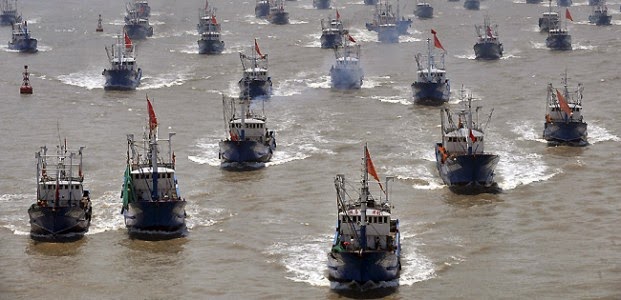
While Russian “volunteers,” such as those who inexplicably showed up in Crimea in 2014, without insignia and with full Russian Army gear and weapons, are known as “Little Green Men,” the Chinese have their own equivalent at sea. Sometimes called “Little Blue Men,” the People’s Armed Forces Maritime Militia have come to provide a “Gray Zone” force multiplier for the People’s Liberation Army Navy (PLAN) in the contested areas of the Western Pacific.
The backbone of Communist Chinese maritime force has long been the maritime militias, largely out of necessity. The PLAN was hardly a force to be reckoned with in the late ’40s and onward. Much of the PRC’s coastal defense was militia, in keeping with Mao’s emphasis on guerrilla warfare. However, in recent years, with some pointing to Xi Jinping’s visit to the Tanmen Militia in 2013 as an impetus, the PAFMM has become more of a force projection instrument, particularly based around Hainan, Guangdong, and Guangxi.
Divided into “primary” and “reserve” units, the maritime militia isn’t as equipped as the PLAN, but it is expected to do a great deal, particularly in the South China Sea. Since the PRC claims a number of islands in the Spratly and Paracel chains, as part of Hainan province, many of the maritime militia units in those islands are from the Hainan maritime militia.
The form most often taken by these militiamen are fishermen. Communist China’s fishing fleets have become notorious all over the Pacific, and increasingly off the coast of Africa as well, for predatory, destructive over-fishing of the oceans, trawling entire fish stocks out of existence. Just recently, fishing fleets off the coast of Chile, Ecuador, Peru, and Colombia were intercepted by local authorities for illegally fishing in those countries’ exclusive economic zones. As with many PRC international efforts, the fishing fleet amounts to pillaging the rest of the world to the Chinese Communist Party’s benefit.
But, again, these fishing fleets double as paramilitary forces, trained and acting in the “gray zone” to enforce Chinese claims to waters and islands–claims that are disputed at best. Often the fishing boats are more aggressive than the PLAN’s warships, playing “chicken” with foreign naval vessels, to include American ones. A Chinese fishing trawler collided with a Japanese coast guard patrol ship of the Senkaku islands in 2010, apparently intentionally. Chinese fishermen attacked a South Korean coast guard ship in the Yellow Sea the same year.
More recently, Chinese fishing vessels have been pushing the Philippines in the South China Sea, pushing into Philippine territorial waters and aiding the Chinese attempts to lay claim to the entirety of the “Nine Dash Line,” a claim that has been denied in international court.
Chinese warfare tends to be fluid, hard to pin down, and the use of fishing fleets as weapons is in keeping with the philosophy outlined in “Unrestricted Warfare” (Qiao and Wang, 1999). Fully understanding what the West considers “war,” and fully willing to expand beyond that, the Chinese Communist Party, following the time-tested Communist philosophy of utilitarianism, will actively use their enemies’ laws against them. The People’s Armed Forces Maritime Militia, in most of its actions, is only one of many examples.
For some further reading:
Directing China’s “Little Blue Men”: Uncovering the Maritime Militia Command Structure
The Strategic Significance of the Chinese Fishing Fleet
The People’s Armed Forces Maritime Militia features prominently in the upcoming Area Denial.